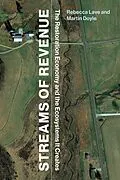An analysis of stream mitigation banking and the challenges of implementing market-based approaches to environmental conservation.
Market-based approaches to environmental conservation have been increasingly prevalent since the early 1990s. The goal of these markets is to reduce environmental harm not by preventing it, but by pricing it. A housing development on land threaded with streams, for example, can divert them into underground pipes if the developer pays to restore streams elsewhere. But does this increasingly common approach actually improve environmental well-being? In Streams of Revenue, Rebecca Lave and Martin Doyle answer this question by analyzing the history, implementation, and environmental outcomes of one of these markets: stream mitigation banking.
Autorentext
Rebecca Lave is Professor and Chair of the Department of Geography at Indiana University. She is the author of Fields and Streams: Stream Restoration, Neoliberalism, and the Future of Environmental Science. Martin Doyle is Professor of River Systems Science and Policy and the author of The Source: How Rivers Made America and America Remade Its Rivers.
Inhalt
Preface vii
Acknowledgments xi
1 Introduction 1
2 Market-Based Approaches to Conservation 11
3 How Stream Restoration Was Born, and What Came of It 29
4 How Markets, and Mitigation, Came to Be Accepted Forms of
Environmental Regulation 49
5 The Actors in Stream Mitigation Banking 73
6 How Mitigation Banks Work, and the Biography of a Bank 97
7 The Streams That Mitigation Banking Creates 121
8 Conclusion: Can Markets for Ecosystem Services Fix
Conservation? 147
Notes 157
References 175
Index 187
